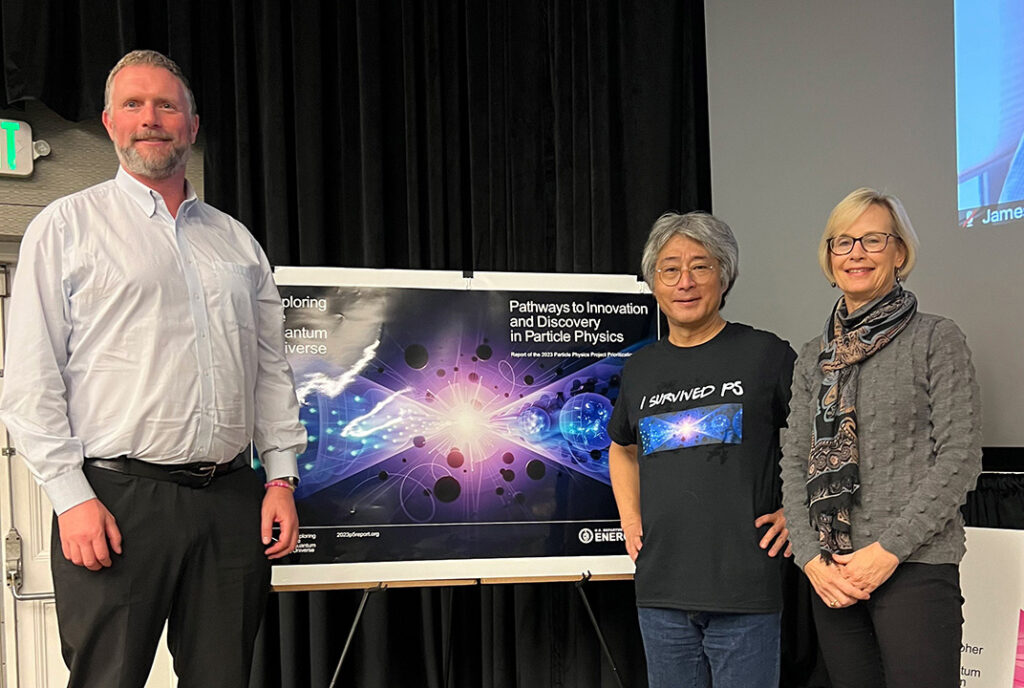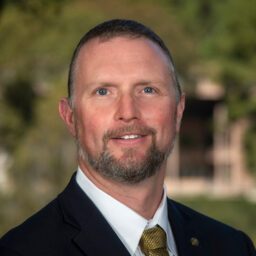
Shaping the Future of Particle Physics
To answer some of the biggest questions about the universe — its origin, structure and ultimate fate — scientists must first understand its tiniest, most fundamental particles and forces.
The field of particle physics, at its most basic, uses the language of physics and mathematics to describe these basic building blocks of the universe. To probe these building blocks, it uses machines, including particle accelerators, which create and collide beams of high-speed subatomic particles.
Over the last year, a panel of physicists — with broader input from scientists around the globe — has assembled a new plan for how to move particle physics forward over the next decade and beyond. Hertz Fellow Cameron Geddes, the director of the Accelerator Technology and Applied Physics Division at Lawrence Berkeley National Laboratory, was part of that panel, dubbed the Particle Physics Project Prioritization Panel (or P5).
“It was tremendously inspirational and educational to serve on P5,” says Geddes. “This plan is designed to guide scientists’ research, guide funding agencies and Congress, and help create a strong future for the future of particle physics.”
Geddes has been involved in the field of particle physics for more than two decades. In the early 2000s as a Hertz Fellow at the University of California, Berkeley, Geddes worked on designing some of the earliest systems that use intense lasers to accelerate particles within an ionized plasma. At the time, this was a relatively novel and unproven idea; Geddes says he likely wouldn’t have been able to pursue it without his Hertz Fellowship.
The research paid off, however. Geddes and his colleagues showed how they could create high-energy waves in plasma to accelerate particles — a result initially met with skepticism but now embraced as having potential to make future accelerators smaller and more capable, enabling new science and practical uses.
In addition to the potential for a next generation of particle physics colliders, Geddes has developed these accelerators toward the goal of providing precise X-ray and particle sources for medical and security applications that could be smaller and more affordable than the billion-dollar machines found at national laboratories.
“This kind of research addresses the need for transformative changes in accelerator performance to enable the future of particle physics, and with many societal applications, but I’m also fascinated by the science of the accelerator itself,” he says. “There are questions about how you control a laser with high intensity and get particles into a plasma structure in a controlled way.”
As his career at Berkeley Lab progressed, Geddes found himself drawn to leadership roles. He loved collaborating with other scientists, exploring a broad range of topics within particle physics and mentoring students throughout their career paths.
“I had early opportunities to develop big proposals at Berkeley Lab,” he says, “and I found it really rewarding to be able to talk to broad communities about how to translate particle physics and its accelerators into applications.”
In 2019, Geddes became the deputy director for experiments at the Berkeley Lab Laser Accelerator (BELLA) Center. In 2021, he was named director of the Accelerator Technology and Applied Physics Division.
“I get to oversee research across a really broad array of accelerator and related science,” he says of his new role.
It also opened up the opportunity for him to take a leading role on the P5 team. The process of assembling the new particle physics decadal plan began with the Snowmass 2021 process, in which physicists submitted more than 500 white papers about the future of the field and gathered in Seattle to discuss their goals and questions.

With that massive amount of community input in hand, Geddes and his colleagues from around the globe then began to develop priorities for particle physics efforts in the coming years.
In December 2023, their draft report was released, and it is now finalized. It outlines recommendations for supporting major ongoing projects, and for building and improving particle accelerators and observatories around the world. These kinds of massive facilities are critical for carrying out large experiments and require international collaboration to build and maintain. New kinds of particle colliders will be required for in-depth research of the Higgs boson — a subatomic particle discovered in 2012 after decades of effort — and for characterizing dark matter and searching for new particles at the 10 TeV per parton scale.
“I think we’re poised for a tremendously exciting decade ahead,” Geddes says. “We have the potential for a lot of exciting new science and, at the same time, the possibility of really broad applications that go beyond what we usually associate with the accelerator and plasma space.”
Illustration credit: Olena Shmahalo for U.S. Particle Physics
